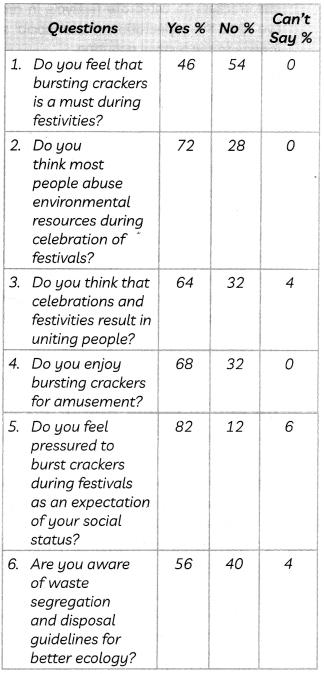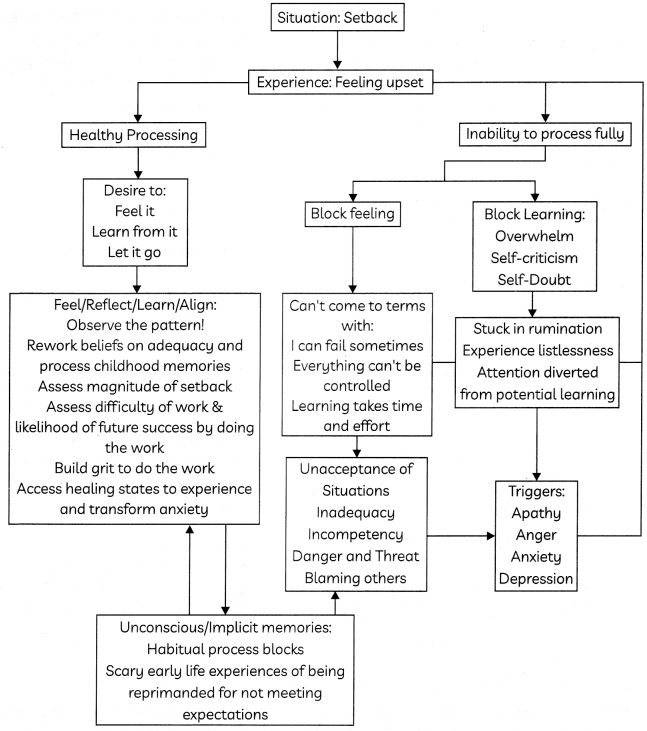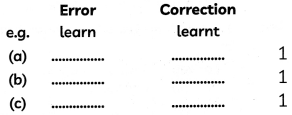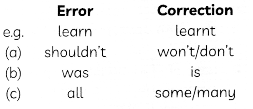Students can access the CBSE Sample Papers for Class 10 English with Solutions and marking scheme Term 2 Set 1 will help students in understanding the difficulty level of the exam.
CBSE Sample Papers for Class 10 English Term 2 Set 1 with Solutions
Time Allowed: 2 Hours
Maximum Marks: 40
General Instructions:
- The Question Paper contains THREE sections—READING, WRITING & GRAMMAR and LITERATURE.
- Attempt questions based on specific instructions for each part.
SECTION – A
Reading [10 marks]
Question 1.
Read the passage given below.
Technology is making advancements at a rapid rate but at the cost of a valued tradition—the crafts industry. The traditional crafts industry is losing a lot of its trained and skilled craftsmen. With that, the art of embellishing brass and 5. copper utensils with fine engravings is also disappearing. The government has identified around 35 crafts as languishing craft.
mechanization
has
made
25. These machines might give a better finesse to these products but they don’t stand out as handcrafted. Quantity has overtaken quality in this industry.
A need to highlight the importance of the hand-made aspect is required by both the government and private sectors, in order to amplify awareness and also support the culture of making handicrafts. A few artisans 30. are still trying their best to rejuvenate and revive their culture and heritage but it’s an uphill task competing with the machine- made goods. A multitude of artisans have changed their professions and are encouraging their progeny to follow suit. There are others who have stayed their ground but are clearly inclined towards buying machines.
its
On the basis of your understanding of the passage, answer ANY FIVE questions from the six given below. (1 × 5 )
(A) What does the writer mean by calling handicrafts a ‘valued tradition’? (1)
Answer:
- valued – showcase talents that are associated with artisans’ lifestyle and history
- tradition – represent rich our artistic culture / heritage / tradition
Detail Explanation:
The writer calls handicrafts a ‘valued tradition’ as it shows the talents of the artisans and represents their rich artistic culture, life style, heritage and tradition.
(B) Rewrite the following sentence by replacing the underlined phrase with a word that means the same from lines (5-15).
If it continues, the workcation (work + vacation) trend will be a powerful boost to domestic tourism operators failing to make progress in the economic slump caused due to the pandemic. (1)
Answer:
If it continues, the workcation (work + vacation) trend will be a powerful boost to domestic tourism operators languishing in the economic slump caused due to the pandemic.
Detail Explanation:
If it continues, the workcation (work + vacation) trend will be a powerful boost to domestic tourism operators failing to make progress in the economic slump caused due to the pandemic.
(C) State any two reasons why artisans are choosing to work via machines rather than handcrafted tools. (1)
Answer:
Saves labour / reduces drudgery / increases production / finesse / effciency
Detail Explanation:
Artisans choose to work via machines as they can now accomplish difficult and demanding tasks relatively easily. The machines save them time and labour, reduce drudgery and increase production. Besides, the machines sometimes give a better finesse to these products.
(D) Why do the artisans need to be ‘lured with incentives’ to impart handicrafts training? (1)
Answer:
Because if artisans impart training to mass/bulk producers, they run the risk of losing their traditional livelihood to them and hence need to be tempted via benefits or rewards, to do so.
Detail Explanation: Though imparting training to mass/bulk producers runs the risk of losing their traditional livelihood, artisans have to be Lured with incentives to provide handicrafts training and keep the custom alive.
(E) List one likely impact of the support of government and private sectors towards the culture of making handicrafts. (1)
Answer:
Creation of awareness and public support for the artisans and their work / more artisans would be incentivised to continue their tradition / artisans wouldn’t change their professions seeking better livelihood
Detail Explanation:
Government and private sectors have been discreetly creating support and public awareness to support the artisans and their work. This way artisans would be incentivised to continue with their profession and tradition and wouldn’t change their professions seeking better livelihood.
(F) How does the writer justify an artist’s act of abandoning her/his traditional craft for a more lucrative option? 1
Answer:
Via the argument that the artisans cannot be expected to continue their profession if it is not profitable, even though the loss of traditional crafts is perturbing.
Detail Explanation:
To justify the artisans’ act of abandoning his/her traditional craft for a more lucrative option, the writer puts up the argument that the artisans cannot be expected to continue their profession if it is not profitable, even though the loss of traditional crafts is disturbing.
Question 2.
Read the following excerpt from a case study titled Impacts of Festivities on Ecology.
Festivals are synonymous with celebration, ceremony and joy. Howeve festivals bring to fore the flip side of celebrations – pollution – air, water, soil and noise. This led to the need of assessing the awareness level among people about ecological pollution during festivals. So, a study was conducted by scholars of an 5. esteemed university in India. This study was titled “Awareness Towards Impact Festivals on Ecology.”
way
into
Table-1: Awareness level among respondents

The study recommended the imposition of strict rules and regulations as opposed to a total ban on all festive activities which have a drastic impact on our environment. The researchers believed that such measures would help in harnessing some ill-effects that add to the growing pollution and suggest 20. further studies be taken up across the country to assess awareness about ecological degradation.
15.
On the basis of your understanding of the passage, answer ANY FIVE questions from the six given below. (1 × 5)
(A) Why do the researchers call pollution the ‘flip side’ of festivals? (1)
Answer:
because the accepted norm is that festivals are synonymous with celebration/joy and people fail to see the other side, which is pollution
OR
festivals and pollution are two sides of the same coin currently/ polar opposites/ completely in contrast, yet together with each other—where we associate festivals with joy and celebration, we can’t deny that pollution is an ignored reality
Detail Explanation:
Unfortunately, festivals and pollution go hand-in-hand. Though festivals are all about celebrations, fun and laughter, today it is (in many ways) traumatizing the mother earth with the litter left after celebrations. Festivals and pollution are two sides of the same coin, where the latter is an ignored reality.
(B) Comment on the significance of the second objective of the study with reference to lines 7-12. (1)
Answer:
- Second objective- Exploring solutions
- Significance- important for knowing steps that need to be taken to address the problem investigated in the research/ knowing what are the immediate actions that need to be implemented to address the issue studied/ helps focus on what needs to be corrected and what needs to be avoided to solve the problem focused on in the research
Detail Explanation:
Second objective is exploring solutions, to bring awareness about celebrating festivals without harming the ecology. To understand and focus on what needs to be corrected and what needs to be avoided, and then give the solution for the problem focused on in the research.
(C) Justify the researchers’ recommendation for limiting the drastic impact of festival pollution on the environment with reference to lines 16-21. (1)
Answer:
- Researcher’s recommendation: Strict rules
- Justification: Strict rules are better than a total ban because banning does not serve the purpose of awareness/ people do not generally conform to banning and tend to revolt/ strict rules pose some restrictions but still give the needed freedom.
Detail Explanation:
Researchers recommend enfo. sing strict ruLes to limit the drastic impact of festival pollution. Government should resort to strict rules instead of total ban because people do not conform to banning and tend to oppose it. So also, banning does put the people under some restrictions but gives the much needed freedom.
(D) Why do the researchers feel that environmental groups and eco-clubs are fighting a losing battle in the given scenario? (1)
Answer:
- the festivals cause pollution along with other issues (give examples) that add to it.
- awareness is the only solution but the lack of it only adds to the problem.
Detail Explanation:
In the study, the environmental groups and eco-clubs aren’t succeeding in their battle against pollution because of unregulated disposal of plastics, garbage dumping, city traffic issues and all sorts of ecological degradation that happens during the festival season. The need of the hour is to sensitize the masses and increase the awareness on celebrating the festivals in an eco-friendly manner.
(E) Even though a larger number of people say ‘no’ to bursting crackers than those who say ‘yes’, festival pollution persists. How does evidence from Table 1 support this statement? (1)
Answer:
- a large percentage of people (72%) abuse environmental resources to celebrate festivals.
- a high percentage of people (82%) use crackers to celebrate festivals in order to live up to the expectation of their social status.
Detail Explanation:
A large percentage of people (72%) abuse environmental resources to celebrate festivals. In spite of a large number of people saying no’ to crackers, pollutions persists as a high percentage of people (82%) use crackers to celebrate festivals in order to live up to the expectation of their social status. It adds to the festival pollution.
(F) What purpose does the ‘Can’t Say’ column serve in the questionnaire (Table 1)? (1)
Answer:
gives a provision to/ allows the respondents to choose not to express/ not to answer/ allows an option to those who lack clarity/ are unwilling to respond.
Detail Explanation:
Other than the obvious ‘Yes’ and ’No’ column, ‘Can’t Say’ aLlows the respondents to choose not to express their opinion on something they are uninterested in, lack of clarity on the topic or doesn’t wish to respond.
SECTION – B
Writing and Grammar [10 marks]
Question 3.
Attempt ANY ONE from (A) and (B).
(A) Study the concept chart from the self-help magazine section of a monthLy pubLication.

Write a paragraph in not more than 120 words, analysing the listed responses to the situation when one faces setbacks. (5)
Answer:
The question tests the folLowing writing LOs:
- convey ideas convincingly using appropriate Language.
- organize the content and structure the ideas Logically, sequentially, cohesively
- use a range of vocabulary and sentence structure appropriate to the content and context
- use of fùnctional Language to show comparison, contrast, emphasis, conclusion, etc.
Detail Explanation:
Setbacks often leave us with a feeling of disappointment and may even lead to acute depression. There are two ways to handle any setback-one for the better, i.e. healthy and the other for the worse, i.e. unhealthy. When we take the setback in a healthy way, we learn from it and let go of the emotions inside. The optimistic approach provides an ability to feel, reflect and align. In other words, we observe the pattern of the setback, especially assess the difficulty of work and possibility of future success by doing the work.
everything-cutting,
polishing,
(B) You are Samina Zaveri, Class X, Vadodara, Gujarat. You come across the following information on a local library’s notice board.

You wish to participate but require more information. Write a letter to Teen- Toggle Games Pvt. Ltd. in about 120 words, enquiring about rules, scholarship details and deadlines. Also enquire about specifications for solo or group entries. (5)
Answer:
Reference to the source of information
- Conveying interest
- Seeking information about rules
- Enquiring about scholarship details
- Asking about defined articles
- Confirm type of entries allowed (Any other relevant information)
Detail Explanation:
Samina Zaveri, Class X Vadodra, Gujarat
20th June, 20XX
The Manager
Teen-Toggle Games Pvt. Ltd.
307, Satija building, Colaba
Mumbai
Subject: Seeking information about board game competition
Dear Sir/Madam
I came across your advertisement on the notice board of a local library. I wish to participate in the board game competition. I need to participate in the competition but need some more information regarding the competition. Kindly provide the following details:
- Age limit
- Specific requirement
- Topic or theme
- Scholarship details
- Are the entries solo or group?
Kindly provide the above details as soon as possible so that I can apply for the same.
Thanking you
Yours sincerely
Samina Zaveri
Question 4.
The following paragraph has not been edited. There is one error in each Une. Identify the error and write its correction against the correct blank number. Remember to underline the correction. The first one has been done for you. (1 × 3)
Have you ever [earn from a mistake you have made? Many shouLdn’t admit doing so. For those who do, there was no need for guilt. We often make mistakes white taking risks, but alt brush them aside and Learn. With that, they usually don’t make mistakes the next time.

Answer:
Hove you ever Learn from a mistake you hove made? Many shouldn’t admit doing so. For those who do. there was no need for guilt. We often make mistakes while taking risks, but aLt brush them aside and learn. With that, they usually don’t make mistakes the next time.

| Error | Correction |
| (a) Learn | (a) Learn |
| (b) Shouldn’t | (b) Shouldn’t |
| (c) Was | (c) Was |
| (d) All | (d) All |
Explanation:
(a) The sentence is in present perfect tense and we use 3rd form of the verb with has/ have. So, learn is not the correct word and we use ‘learnt’.
(b) The sentence is in present tense and there is no sense of advice or suggestion. So, should is the wrong word and we will use won’t/don’t.
(c) The complete extract is in present tense, so ‘was’ is the wrong word and the correct word is ‘is’.
(d) If we understand the sense of the sentence, we will know that the right word is some/ many not all.
Question 5.
Read the conversation between a teacher and student and complete the passage that follows. (1 × 2)
Biology Teacher: I instructed you to draw the diagram of bacteria. Why did you submit a blank sheet?
Sameer: Sir, I had drawn the diagram of bacteria, but you can’t see it because it is not visible to the naked eye.
The biology teacher had instructed Sameer to draw the diagram of a bacterial cell and asked him
(a) …………… a blank sheet. Sameer respectfully answered that he had drawn the diagram but
Answer:
why he had submitted
Detail Explanation:
If the sentence in the direct speech is in past tense, the verb changes to past perfect tense. The pronoun ‘you changes to ‘he’, hence, did you submit changes to ‘he had submitted’.
(b) ………….. to the naked eye. (1 + 1)
Answer:
he/ the teacher couldn’t see it because it was not visible
Detail Explanation:
In the first part of the sentence, there is no change in the indirect speech as it already uses past perfect change and that is not changed. In the second part of the sentence, can’t is changed to ‘couldn’t’ and the pronoun you is changed to ‘he’.
Section – C
Literature [20 marks]
Question 6.
Answer ANY SIX questions in 30-40 words each. (2 × 6)
(A) What is the significance of the Buddha’s request for a handful of mustard seeds and the addition of a condition to it? (2)3
Answer:
- added condition – must be procured from a house where no one had Lost a child, husband, parent or friend
- made Kisa Gotami realize the universal nature of death
Detail Explanation:
Kisa Gotami came to Buddha asking him to bring back his dead son to life. Buddha asked her to go to the village and bring some mustard seeds from a house where no death had been occured. The condition held a significant meaning that death is universal. One who is born is sure to die. It was only after that that Kisa Gotami realized her folly and came to terms with the will of God.
(B) Justify how ‘Animals’ by Walt Whitman is a criticism of mankind and its ways. (2)
Answer:
- human beings seem to have dropped/ shed their values/virtues/attributes
- human society blemished by ego, hypocrisy, hatred, materialism, fake display
- profusion of complaints, race for greed and lack of contentment
- the poet wishes to leave the human world and join animals as he finds them better than humans (a testimony)
Detail Explanation:
The poet appreciates the virtues animals possess and that, they were once human virtues. But, now the human beings have forgotten all virtues and have become the victims to innumerable vices such as ego, hypocrisy, hatred, materialism, greed, show off, dissatisfaction, etc. For all these reasons, the poet wishes to live with animals.
(C) Comment on the tone of the speaker when she says ‘Will you please look at me when I’m speaking to you, Amanda!’.
Answer:
- Tone
- exasperated
- irritated
- frustrated
- annoyed
edging,
Detail Explanation:
The speaker sounds exasperated, irritated, frustrated and annoyed while speaking to the little girl Amanda. Amanda was fed up of constant rebukes and questionings and doesn’t want to answer or pay attention to the speaker.
(D) A ballad includes the telling of a tale as well as a surprise ending. Using evidence from the poem, explain how these features are included in ‘The Tale of Custard the Dragon’. (2)
Answer:
Tale: The poem tells the story of Custard, the dragon (setting, characters, rising action, climax, resolution).
- portrays his life with Belinda and the other pets where he is considered a coward.
- Surprise ending: The end of the poem shows how Custard rose to the occasion; gobbled the pirate and proved his bravery.
Detail Explanation:
A ballad is a story in a poem form where there is a main character and other supporting characters as well. It follows all the elements of a story like setting, characters, rising action, climax and resolution. The poem is about a dragon who was considered coward by Belinda and other pets. But, at the end, it was custard who saved everyone from the pirate.
(E) Which two issues about himself convinced Lomov of his decision to get married? (2)
Answer:
He is expected to marry and cannot stay unmarried
- He ought to lead a quiet, settled and regular life at his age (‘critical age’/ thirty- five).
- He needs a partner as he suffers from palpitations and is always getting upset.
Detail Explanation:
Lomov decided to get married as he couldn’t stay unmarried for long. He was of age, when he thought, he must be leading a settled life. He also suffered from anxiety attacks and palpitations and needed someone to take care of him.
(F) Briefly state how Matilda invited ‘a dreadful life of necessity’ into her family. (2)
Answer:
Matilda’s extreme self-indulgence-dreams of a luxurious life, riches and jewellery
- Doesn’t pay heed to the advice of wearing natural flowers-borrows the necklace- loses it
- In paying for the necklace invited a horrible life of necessity and deprivation/ a life that resulted in a hand-to-mouth existence, Or any other relevant point
Detail Explanation:
Matilda always dreamed of a luxurious life and was not satisfied with her middle- class life. She longed to have riches. She invited misery upon herself when she borrowed her friend’s necklace and lost it. Now, the life became ill for the couple. They borrowed money to compensate the loss and consequently, had to live a life full of hardship and struggle to pay back the loan.
(G) The hack driver successfully trapped the narrator in his web of words. Comment. (2)
Answer:
Hack driver – a conversationalist, cheerful, friendly, open
- befriends the narrator who trusts him for everything he says and does
- asks the narrator to stay behind, himself makes inquiries, offers home-made lunch, mints money
- befools and outwits the narrator in the guise of help
Detail Explanation:
The lawyer was new to the town and the hack driver came across as a friendly, cheerful and an open person, who impressed the lawyer with his sweet talks. The lawyer fully trusted him and did what he said. He never gave a chance to the lawyer to come to the front and ask about the offender. He was a cunning man who outwits the narrator in the guise of help.
Question 7.
Answer ANY TWO of the following in about 120 words each. (4 × 2)
(A) Parents play a crucial role in the upbringing of their children. Critically examine the parents of Bholi and Ebright, highlighting their impact on their children’s lives. (4)
Answer:
Introductory sentence:
- crucial and indelible role played by parents
- parents influence their children both implicitly (indirectly) and explicitly (directly)
- are role models, first teachers, friends, companions, guides
designing
- Richard H. Ebright’s mother- loving, caring, understanding, a friend, a companion
- filled the vacuum in Ebright’s life in his father’s absence
- invested time and energy in his upbringing which made him see heights ofsuccess
- Bholi’s parents—uncaring, indifferent, biased, insensitive, had a patriarchal mindset
- traditional outlook—did not believe in the education of girls, totally indifferent to Bholi and her needs, negLected her
- did not bother to groom her (oil her hair, give her good clothes to wear)
- sent her to school not to educate her but to save their own face
- despite their prosperity, they left Bholi to her own misery, worst was when they decided to marry her off to Bishamber (Accept any other relevant content point that lends itself to critical examination)
Concluding thought:
The contribution and companionship of parents cannot be denied. Love, care, and guidance from parents make a difference, sculpt children and shapes their future.
Detail Explanation:
It is rightly said that home is the first school for a child and it paves the way for future successes. Richard’s mother was highly compassionate, caring, understanding and supportive. She raised Richard alone and she always was like a companion to him. She was the one who developed in him a curiosity and interest about the world around him. She brought him books that inspired Richard. On the other hand, Bholi’s parents were uneducated, biased and uncaring. The totally neglected Bholi was a simple-looking girl. They didn’t believe in educating girls but sent Bholi to school to save themselves from embarrassment. Though they were prosperous enough, they never gave Bholi good clothes or food. And above all that, they decided to marry Bholi to Bishamber, a man almost twice her age. But thanks to her teacher, Bholi was able to get education and could oppose all the wrongs done to her.
etc.
(B) Pranjol and Rajvir discuss their next vacation destination. They shortlist Coorg and Goa. Rajvir is keen on Coorg and tries to convince Pranjol. Develop a conversation between the two, based on your understanding of Glimpses of India.
You may begin like this:
- Rajvir: Hey Pranjol! I think we should be visiting Coorg. It is a beautiful place with coffee plantations. I can smell the aroma already!
-
Pranjol: I gave you the opportunity to explore a tea plantation last year, in Assam; I want to… (4)
Answer: - Rajvir: Hey Pranjol! I think we should be visiting Coorg. It is a beautiful place with coffee plantations. I can smell the aroma already! Pranjol: I gave you the opportunity to explore a tea plantation last year, in Assam; I want to…
- Rajvir: There is a lot more to do in Coorg than smelling the coffee! The place has rainforests, so the megafauna will be worth watching. Not just this, Coorg provides opportunities to indulge in adventure sports like river rafting, rappelling, mountain biking, to name a few. Pranjol: That sounds interesting, but 1 would prefer some serene moments too, away from this post-pandemic hustle-bustle.
- Rajvir: Oh! The answer is Coorg again!
- Pranjol: Oh, come on! You can’t be serious..
- Rajvir: Believe me, I am. Coorg is the place. It has beautiful natural walking trails and the Brahmagiri hills offer a panoramic view I read that the place has the largest Tibetan settlement, so the environment will reflect peace and spirituality, I’m sure.
- Pranjol: Have to say, you’ve presented a fine case in favour of Coorg and convinced me. Let’s plan to leave for Coorg next Wednesday!
(C) Farce is a kind of comedy that includes situations and dialogues that are ridiculous, exaggerated and even absurd. Evaluate the play, ‘The Proposal’, as a farce. (4)
Answer
Introductory sentence:
farcical characters, their ridiculous and odd behaviour, unlikely and exaggerated situations (profuse in the play)
the
- humour in the play, improbable situations, childish behaviour of the characters (making a mountain out of a molehill), arguments and quarrels
- hurling of accusations and insults without a second thought
- resolving the differences and fighting again over another topic
- Lomov’s nerve problems and other ailments
- Chubukov’s theatrical statements
- Natalaya’s impulsive and belligerent remarks (Any other relevant evidence)
Concluding Statement:
the manner in which the final proposal is made amidst all the chaos, makes the play a farce.
Detail Explanation:
The play The Proposal’ is a farce were the characters behave oddly and in a ridiculous manner. The events are highly exaggerated giving rise to humour. Though the characters are grown up persons, they behave in a childish manner and are indulged in fights and arguments. They start on a good note but ultimately end up hurling abuses at each other. They insult each other like anything over trivial matters. As soon as one controversial topic ends they come up with another. Lomov’s nervous panic attacks, Chubukov’s theatrical statements and reactions, Natalya’s impulsive remarks all add to the humour.
method